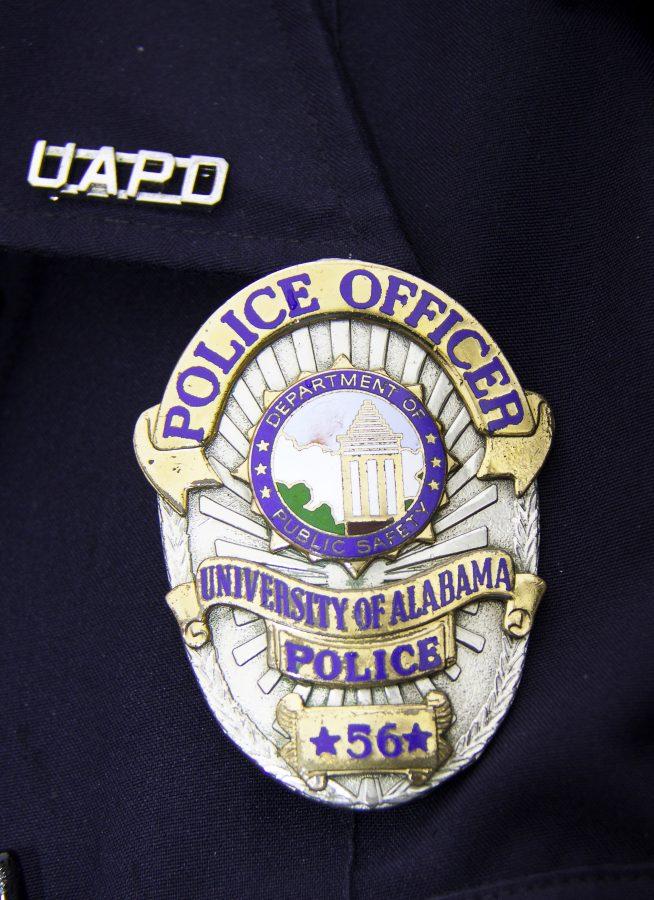 The University of Alabama Police Department currently employs 72 authorized, full-time sworn police officers, Police Chief Tim Summerlin said, a force that is comparable in size to many other SEC schools. Unlike those schools, UAPD does not employ a Public Information Officer and instead requires that all public information requests be carried out through the Office of Media Relations.
The University of Alabama Police Department currently employs 72 authorized, full-time sworn police officers, Police Chief Tim Summerlin said, a force that is comparable in size to many other SEC schools. Unlike those schools, UAPD does not employ a Public Information Officer and instead requires that all public information requests be carried out through the Office of Media Relations.
In this system, UAPD releases little information about its functions and operations, despite operating as an independent police department in conjunction with the University of Alabama’s Media Relations. UA spokeswoman Cathy Andreen said the reason why the Capstone uses this system is that UAPD officers are busy doing other work, so they don’t have anyone who is specifically appointed a PIO.
“As the central media relations office for the University, the UA office of Media Relations functions as the public information office for UAPD,” Andreen said. “All media requests come through Media Relations.”
Sgt. Brent Blankley, the Public Information Officer for the Tuscaloosa Police Department, said his department utilizes a PIO to keep the public informed and protected in a timely manner.
“We feel that it is very important to have a PIO because it’s the easiest way to get your message out to the public,” Blankely said. “We’re a transparent department, so when things happen, good or bad, we release that information to the public because the citizens that we’re there to protect have a right to be informed about everything going on.”
Although the Tuscaloosa Police Department operates as a separate entity from UAPD, the departments collaborate in certain situations, such as on football gamedays and fringe patrol. Summerlin explained that like any other police force, UA officers are also granted arrest powers under state law and are certified by the State of Alabama Peace Officers Standards and Training Commission.
“UAPD’s sworn officers are fully qualified police officers who meet the same standards and have the same authority as Tuscaloosa PD officers and other city and county law enforcement officials statewide,” Summerlin said.
Blankley said when TPD is involved with a case with other departments, they make sure that all information released comes through his office.
“When you have information coming out from one centralized location, such as my office, they know exactly who to call,” he said. “You have one source sending information out, not partial information from three or four different places.”
The University of Georgia police department, which employs 90 police officers to serve a similar campus population of 34,000 students, does allow their Chief of Police to interact directly with the media in handling public information requests.
The Chief of Police of their department, Jimmy Williamson, said he takes the lead for the University from a police standpoint, and their Vice President for Public Affairs Tom Jackson actually prefers it that way.
“We’ve found bureaucracy slows it done and makes y’all [the media] search more,” Williamson said. “That way they don’t feel like they’re keeping something from someone.”
Williamson said Georgia ranks second after Florida for being the most open state when it comes to making public information and records the most accessible, and UGA posts all police reports taken from the previous day on their department website every morning.
“I want to be as transparent as humanly possible,” he said. “The community has a right to know and I have a responsibility.”
Williamson explained that the different systems UGA and UA have in place when handling media requests are expected across various police departments.
“When you compare us to other police departments everyone is going to be slightly different because we’re handling different communities,” he said. “This is all based on community needs as everyone is serving a unique city.”
Leading in today’s Crimson White:
Ain’t Misbehavin’ to take audience back to Harlem
[Opinion] A discussion on the future of fraternity rush at Alabama
[Letter to the Editor] UA gymnastics coach Sarah Patterson: Student supporters of team are champions







